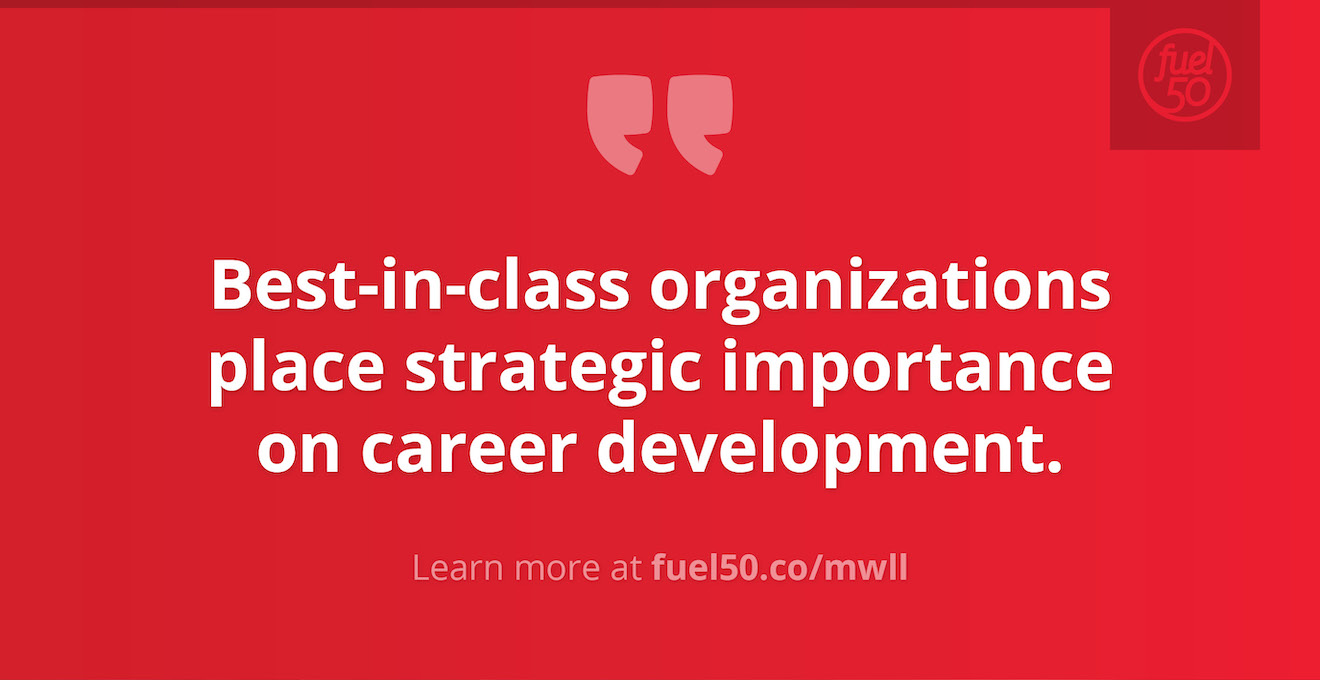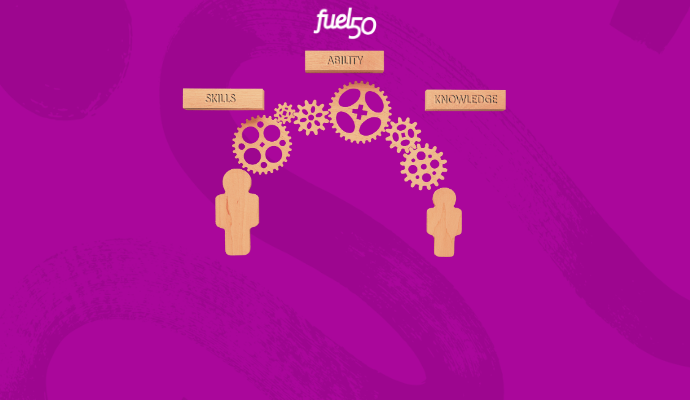As we reflect on 2021, it really was a whole lot better for many people, and certainly a step up from the terribly chaotic pandemic year of 2020.
Anne Fulton, Founder & CEO of Fuel50, predicted this when she wrote, “2020 has been the toughest this century for us all. Let’s focus forward on a vision of a better 2021, for everyone.”
Yes, 2021 WAS better for most of us, and this comment from James Freeze, Chief Marketing Officer at Interactions (an AI company) spoke to some of the big lessons we learned from 2021 when he told Forbes:
“If I’ve learned anything this year, it’s that there is no ‘normal” … we ditched all work norms as we relocated, shifted our hours and found new ways to communicate and collaborate; and it worked. Moving forward, I’m taking the lesson that … every company and individual has to find what works for them.”
Having organizations and individuals everywhere “find what works for them” is the vision that Anne Fulton was talking about and something that has been front of mind this year for many.
Here are four key workplace lessons learned from 2021:
1. No matter what you call it — remote, hybrid, or flexible work — it’s not going away anytime soon.
Although the pandemic and lockdown scrambled businesses and workplaces everywhere, office workers had another option — remote work. It wasn’t the solution for everyone, of course, but for many people, it allowed them a way to keep working and remain safe from COVID, too.
Nobody really knows exactly what percentage of workers were able to work remotely, but here’s some insight on that from The Economist:
“In February 2020, Americans on average spent 5% of their working hours at home. By May, as lockdowns spread, the share had soared to 60% — a trend that was mirrored in other countries. […]
Most office workers remain steadfastly “remote-first,” spending most of their paid time out of the office. Even though a large share of people have little choice but to physically go to work, 40% of all American working hours are still now spent at home.
In mid-October, American offices were just over a third full, suggest data from Kastle Systems, a security firm. From Turin to Tokyo, commercial areas of cities remain substantially quieter, compared with pre-covid norms, than residential ones.”
It also seems that the remote work experience is going to continue, even if it becomes more of a “hybrid” model (a mixture of days worked both in the office and from a remote location), or “flexible,” where schedules vary but contain a mixture of time spent working both remotely as well as the office depending on both the jobs assignment AND the personal needs of the employee.
Why is remote work, in some form, going to continue? It’s simple: as we learned in 2021, too many people like the flexibility (and safety) that remote or hybrid work offers. The Wall Street Journal described it this way:
“Where the office was once the daily default, it is now a distant memory for many workers—and a lot of them don’t miss it. Employees who once rolled out of bed and onto the commuter train without question may now think twice about trading their sweatpants for suits and their bedroom desk for an open-concept floor plan.
Survey after survey shows that the majority of employees want to spend at least three days a week working remotely, and very few want to return to the office full time. Eighteen months of remote work means that people have restructured their homes, their family schedules and their personal priorities in ways that may not make it appealing to spend more than the occasional day back at the office.”

2. Organizations are serious about Upskilling, Reskilling, and all manner of Learning & Development
This past year, things like learning, upskilling, and reskilling have become a top priority for organizations across the globe.
As Fuel50’s Global Talent Mobility Best Practice Research found,
“Internal recruitment, career development and upskilling are all absolutely in demand right now. People are willing to learn more within their current organization and even in their current role. People are actively looking to grow and develop and are seeking opportunities to move forward in their careers.”
New research from McKinsey, the global management consultant, found “the need to address skill gaps is more urgent than ever. [Most] respondents (58 percent) say that closing skill gaps in their companies’ workforces has become a higher priority since the pandemic began.”
So, what have we learned about reskilling, upskilling, and Learning & Development in 2021?
Here are four key findings from Fuel50’s Global Talent Mobility Best Practice Research:
- A whopping 80% of HR leaders said that employee reskilling was their top strategic organizational priority for the next two years.
- Best-in-class organizations place strategic importance on career development. They invest in employee development and provide development opportunities to ALL their employees.
- In top-performing organizations, leaders take an active role in developing others, and they are given the tools and resources to support employee development.
- The highest performing organizations are prioritizing leadership development. They said their leaders are upskilled and act as role models by developing themselves.
In short, active leadership involvement in employee development leads to increased business performance.
This was one of the key lessons from 2021, and it showed the powerful need for a clear focus on broadening and improving employee skills moving ahead. In fact, the Fuel50 report spelled it out like this:
“There needs to be a deep systemic organizational commitment, investment, and passion for the growth of people and their skills, and within that, a commitment to harness internal mobility as a lever for building skills and growing talent. Those that do this will be far more likely to thrive in the future of work.”
3. The focus on employee wellbeing is growing
Employee wellbeing has been critically important long before COVID kicked in. But now, wellbeing has taken on even greater importance in every organization’s workplace plans.
As Korn Ferry recently described it in their Future of Work Trends analysis,
“To offset the negative impact of the pandemic on engagement and performance, organizations need to put employee wellbeing center stage and monitor and nurture it more seriously than ever. Organizations that are leading the way in employee wellbeing embed it in all aspects of their people strategy. Research shows that this has a positive impact on retention, absenteeism levels, productivity, and overall satisfaction.”
They add that organizations everywhere face the economic burden of sickness and stress in their workforce, and that manifests itself in medical expenses as well as lost productivity. That’s not good for anyone. And one of the many things that has come out of so many people working remotely is that employees now have a much greater understanding and concern about their own wellbeing.
As highlighted in our recent Fuel50 Capability Trends Report on Wellness in the Workplace:
“The global pandemic has elevated [wellness] to a critical strategic priority for organizations globally. Governments, communities, and workplaces all need to do their bit to ensure people have support and resources to safeguard their wellness. […] research has shown that those organizations that invest in wellness have healthy employees who are more productive and less likely to be absent. In return, organizations gain on their health and wellness investments and keep health care costs to a minimum.
Offering a range of wellness programs is one tactic for lifting levels of employee wellbeing in an organization. However, we know that to create a culture with employee wellness at its heart, you need to consider and elevate specific employee capabilities and skills.”
Better employee wellbeing is closely connected to improved skills and capabilities, but that finding from our Fuel50 research shouldn’t be a great surprise because, as Korn Ferry also noted: “(Employees) want companies to act more human, (and) to have a greater purpose that speaks to connection and support.”
That’s one of the really big lessons learned from 2021 about the need for better employee wellbeing, because it’s simply the right thing to do — for both people AND organizations.

4. The Great Resignation may really be about employee burnout
It’s been hard for business leaders to get their hands around “The Great Resignation,” aka “The Big Quit.”
There are many theories and speculation on what is behind it, and some question if it is even all that big, but the main cause is thought to be people who decide to quit when they are asked to give up remote work and return to the office.
However, a growing number of business leaders and analysts believe that “The Great Resignation” is really about something a lot more simple – employee burnout.
Fast Company magazine made this case for it:
“Smart leaders know that people have deeper concerns than simply whether they have to come into the office or not. … Workers aren’t just looking for higher pay, more time off, or more days at home (though those things would surely help in the short-term) … They’re actually questioning the whole meaning of the daily grind.”
“Workers are burned out,” Robert Reich, former U.S. Secretary of Labor in the Clinton Administration, tells TIME. “They’re fed up. They’re fried. In the wake of so much hardship, and illness and death during the past year, they’re not going to take it anymore.”
Aytekin Tank, the founder of Jotform, wrote in Fast Company, that it’s imperative for leaders to assess the risk factors for burnout in our organizations – and the only way to do that is by direct feedback from employees. He says,
“At my company, we give regular surveys to gain feedback on how people feel about their workloads and our culture’s work/life balance. Are we being flexible where it matters? Are we giving employees autonomy over their jobs—and acknowledging good work? These are questions that will help you determine what’s causing the most stress for your team and take steps to ward off burnout before it takes root.”
Final thoughts on Lessons Learned from 2021
The lessons learned from 2021 will stay around for a while. That’s because so many of them are about how we coped with the struggles from the continuing pandemic and lockdown, and what so many people did to find better ways to get through them.
We’ll still have pandemic-driven struggles in 2022, of course, but if we’re lucky, the lessons learned from this year will be a solid foundation we can use to build better ways to cope in the next one.
Dr. Adam Grant, an organizational psychologist at the University of Pennsylvania’s Wharton School of Business, spoke to this in a recent Wall Street Journal article titled The Real Meaning of Freedom at Work, and his insights and wisdom are something we should all take to heart.
Here’s what he said:
Work isn’t just our livelihood. It can be a source of structure, belonging and meaning in our lives. But that doesn’t mean our jobs should dictate how we spend most of our waking hours. For several generations, we’ve organized our lives around our work. Our jobs have determined where we make our homes, when we see our families and what we can squeeze in during our downtime. It might be time to start planning our work around our lives.”
Way back at the end of last year, our 2020 wrap-up observed “it’s tough being a worker in today’s world,” but also that “the future of work belongs to the flexible, agile, and resilient.”
Both of those statements are equally relevant … and equally true as we head into 2022.
Yes, sometimes we need to revisit how we looked at the past to prepare for the future, and Anne Fulton’s call for a 2021 that was better than 2020, rings true as this New Year approaches.
Let us hope that whatever comes at us in 2022 is something we not only are prepared for but can learn and grow from.
It’s that kind of growth that helped us survive the worst of the global pandemic in 2020 and 2021. If we could handle all of that, we can certainly handle whatever this new year may bring.






